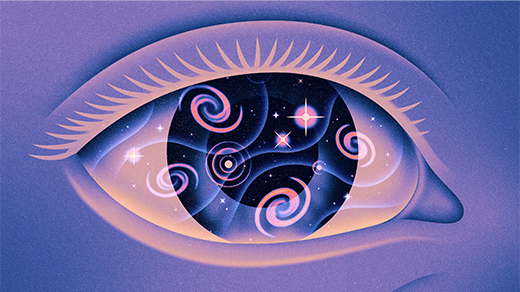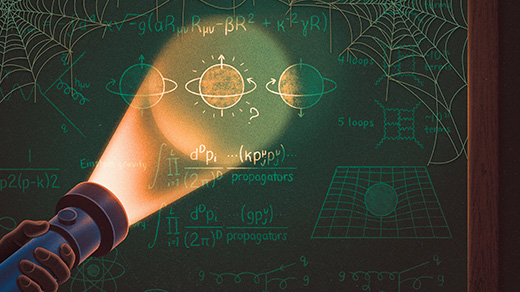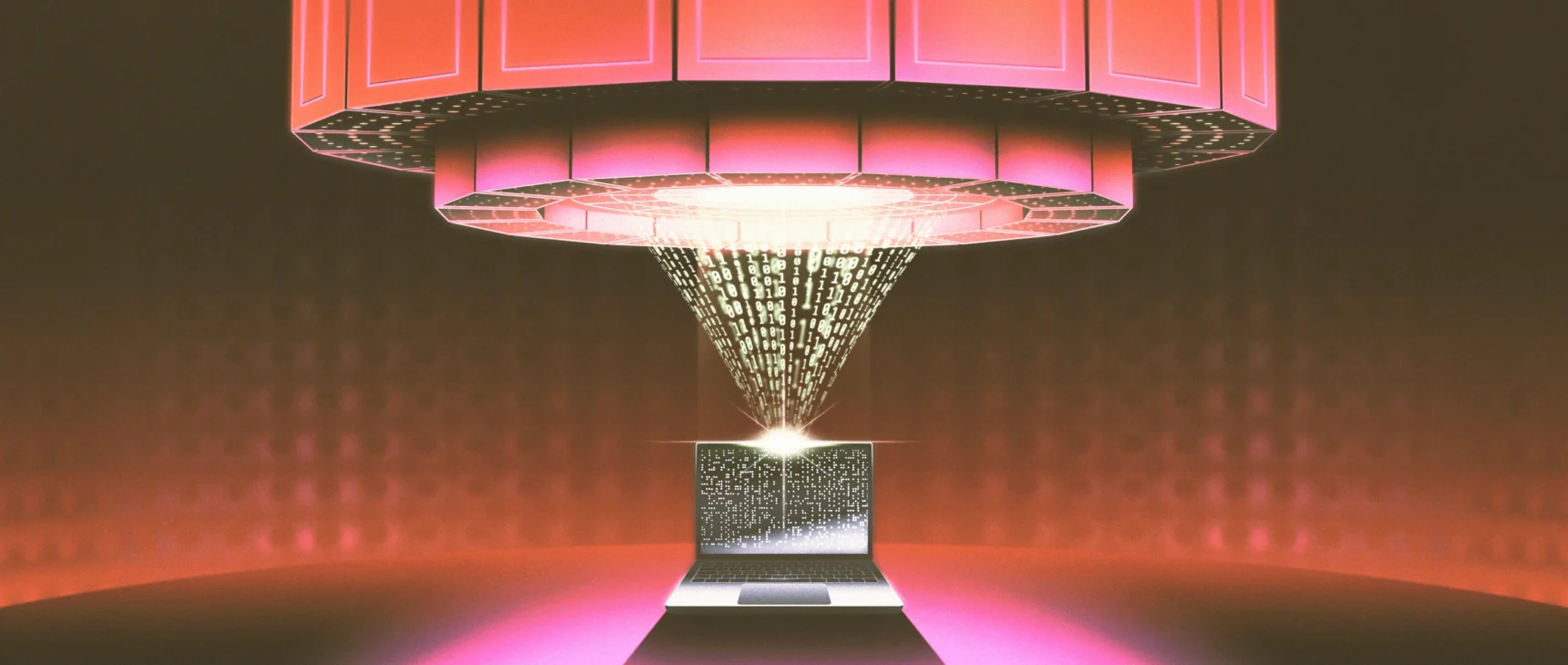AI Comes Up with Bizarre Physics Experiments. But They Work.
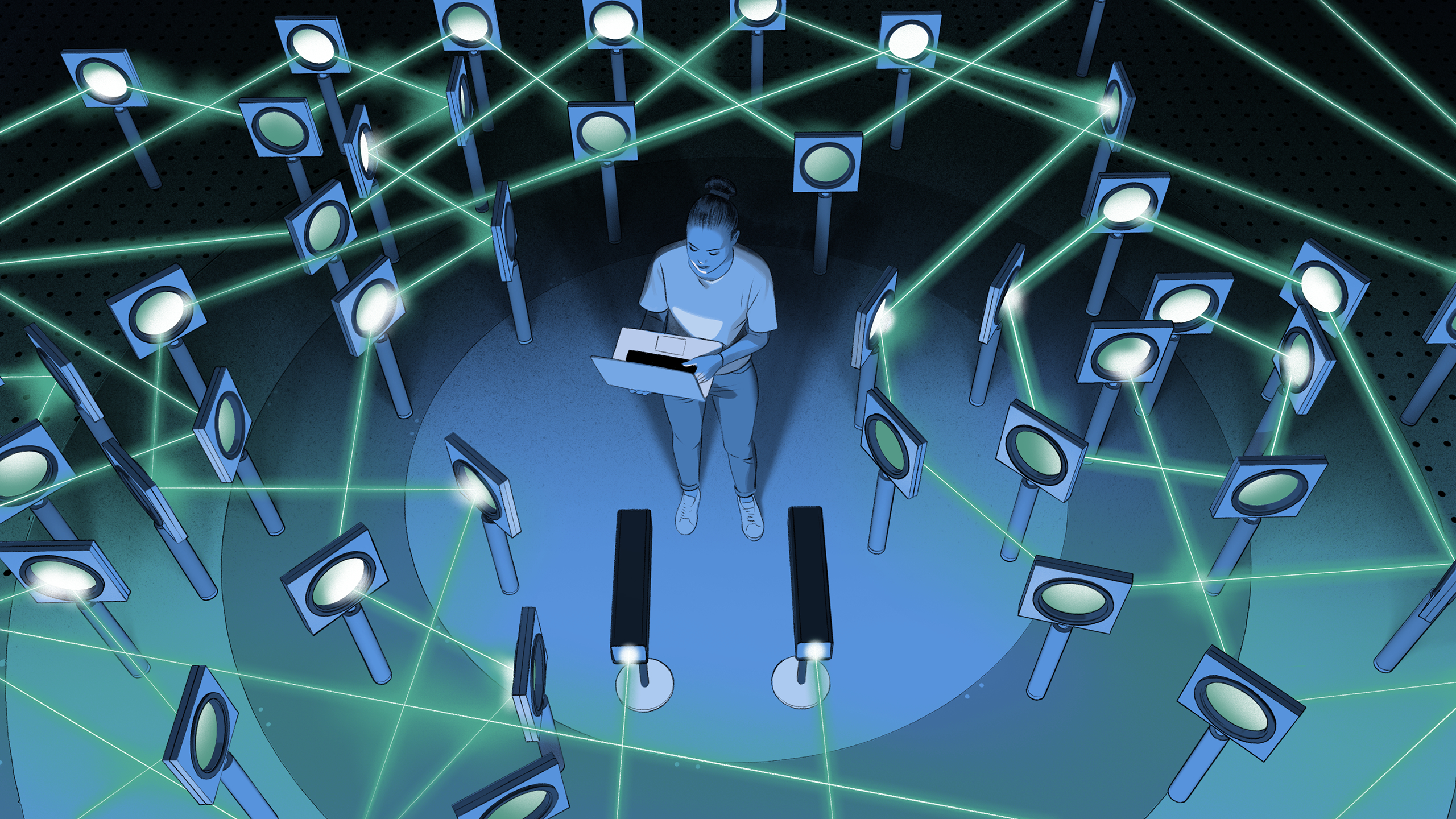
Señor Salme for Quanta Magazine
There are precision measurements, and then there’s the Laser Interferometer Gravitational-Wave Observatory. In each of LIGO’s twin gravitational wave detectors (one in Hanford, Washington, and the other in Livingston, Louisiana), laser beams bounce back and forth down the four-kilometer arms of a giant L. When a gravitational wave passes through, the length of one arm changes relative to the other by less than the width of a proton. It’s by measuring these minuscule differences — a sensitivity akin to sensing the distance to the star Alpha Centauri down to the width of a human hair — that discoveries are made.
The design of the machine was decades in the making, as physicists needed to push every aspect to its absolute physical limits. Construction began in 1994 and took more than 20 years, including a four-year shutdown to improve the detectors, before LIGO detected its first gravitational wave in 2015: a ripple in the space-time fabric coming from the faraway collision of a pair of black holes.
Rana Adhikari, a physicist at the California Institute of Technology, led the detector optimization team in the mid-2000s. He and a handful of collaborators painstakingly honed parts of the LIGO design, exploring the contours of every limit that stood in the way of a more sensitive machine.
But after the 2015 detection, Adhikari wanted to see if they could improve upon LIGO’s design, enabling it, for instance, to pick up gravitational waves in a broader band of frequencies. Such an improvement would enable LIGO to see merging black holes of different sizes, as well as potential surprises. “What we’d really like to discover is the wild new astrophysical thing no one has imagined,” Adhikari said. “We should have no prejudice about what the universe makes.”
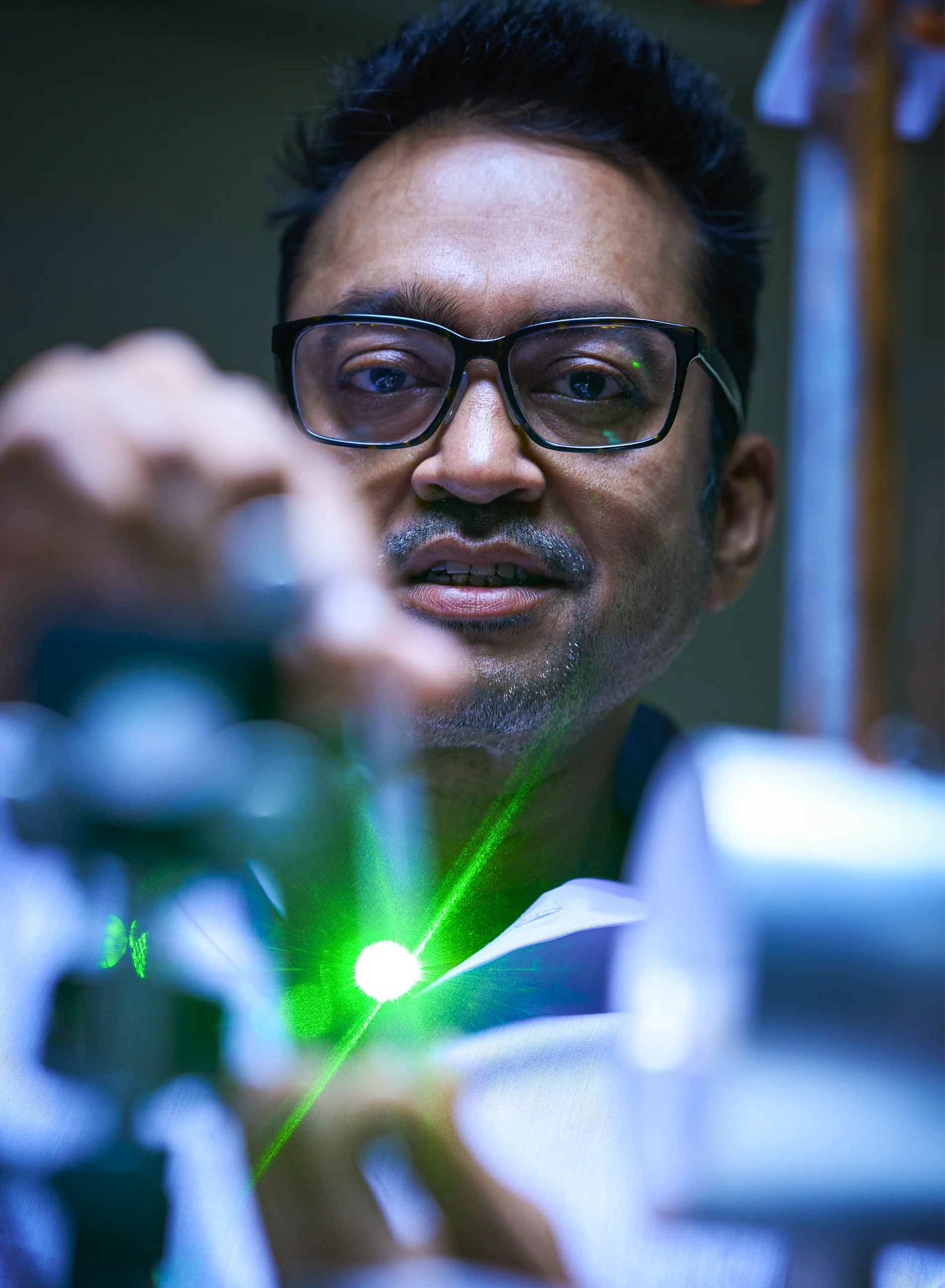
Rana Adhikari, a physicist at the California Institute of Technology, recently employed AI to find ways of improving the design of gravitational-wave detectors.
Steve Babuljak
He and his team turned to AI — in particular, a software suite first created by the physicist Mario Krenn to design tabletop experiments in quantum optics. First, they gave the AI all the components and devices that could be mixed and matched to construct an arbitrarily complicated interferometer. The AI started off unconstrained. It could design a detector that spanned hundreds of kilometers and had thousands of elements, such as lenses, mirrors and lasers.
Initially, the AI’s designs seemed outlandish. “The outputs that the thing was giving us were really not comprehensible by people,” Adhikari said. “They were too complicated, and they looked like alien things or AI things. Just nothing that a human being would make, because it had no sense of symmetry, beauty, anything. It was just a mess.”
The researchers figured out how to clean up the AI’s outputs to produce interpretable ideas. Even so, the researchers were befuddled by the AI’s design. “If my students had tried to give me this thing, I would have said, ‘No, no, that’s ridiculous,’” Adhikari said. But the design was clearly effective.
It took months of effort to understand what the AI was doing. It turned out that the machine had used a counterintuitive trick to achieve its goals. It added an additional three-kilometer-long ring between the main interferometer and the detector to circulate the light before it exited the interferometer’s arms. Adhikari’s team realized that the AI was probably using some esoteric theoretical principles that Russian physicists had identified decades ago to reduce quantum mechanical noise. No one had ever pursued those ideas experimentally. “It takes a lot to think this far outside of the accepted solution,” Adhikari said. “We really needed the AI.”
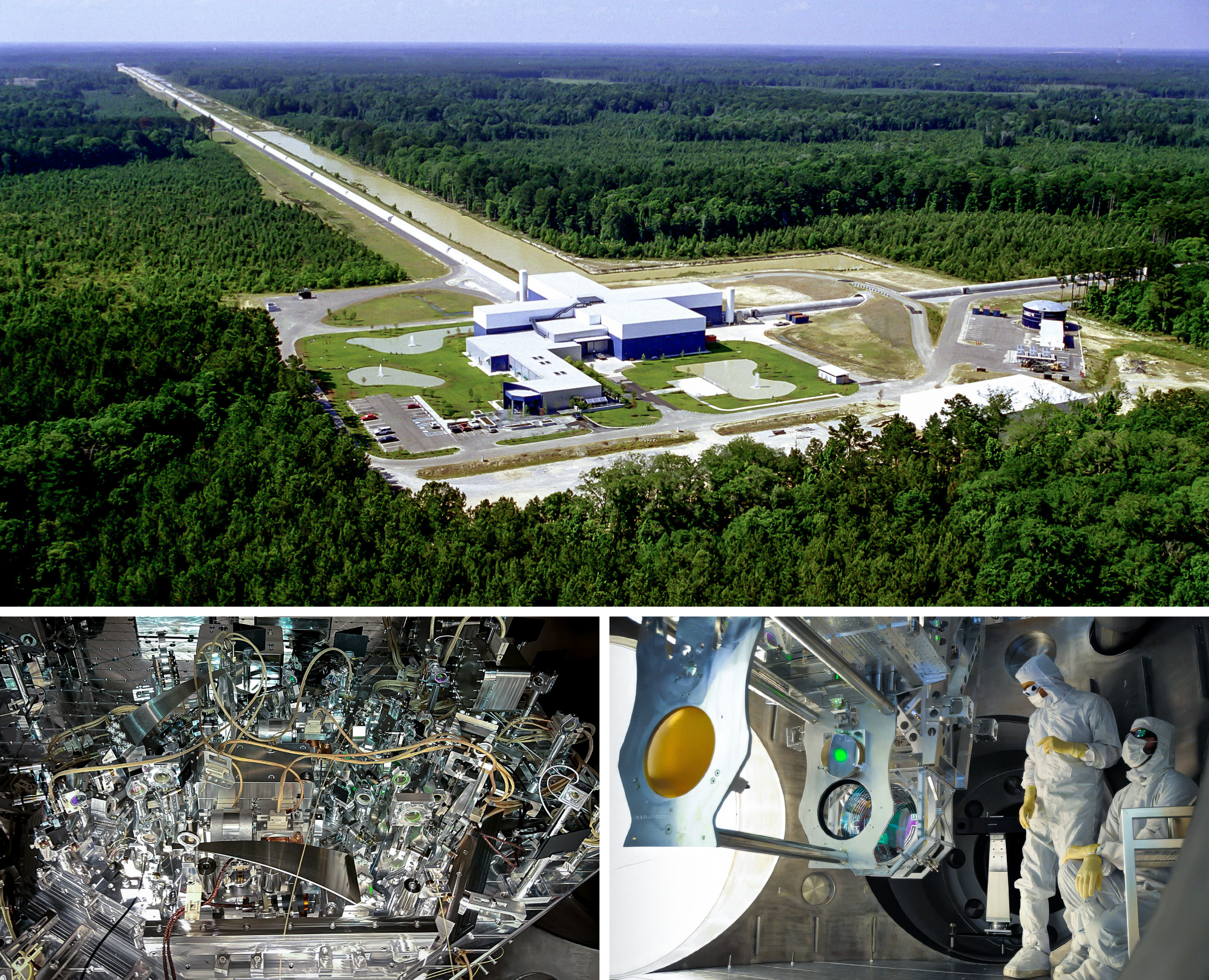
AI software conceived of a novel layout of optical components that would make the LIGO gravitational-wave detectors 10 to 15% more sensitive. The aerial view shows the detector in Livingston, Louisiana.
Caltech/MIT/LIGO Lab
If the AI’s insights had been available when LIGO was being built, “we would have had something like 10 or 15% better LIGO sensitivity all along,” he said. In a world of sub-proton precision, 10 to 15% is enormous.
“LIGO is this huge thing that thousands of people have been thinking about deeply for 40 years,” said Aephraim Steinberg, an expert on quantum optics at the University of Toronto. “They’ve thought of everything they could have, and anything new [the AI] comes up with is a demonstration that it’s something thousands of people failed to do.”
Although AI has not yet led to new discoveries in physics, it’s becoming a powerful tool across the field. Along with helping researchers to design experiments, it can find nontrivial patterns in complex data. For example, AI algorithms have gleaned symmetries of nature from the data collected at the Large Hadron Collider in Switzerland. These symmetries aren’t new — they were key to Einstein’s theories of relativity — but the AI’s finding serves as a proof of principle for what’s to come. Physicists have also used AI to find a new equation for describing the clumping of the universe’s unseen dark matter. “Humans can start learning from these solutions,” Adhikari said.
Apart but Together
In the classical physics that describes our everyday world, objects have well-defined properties that are independent of attempts to measure those properties: A billiard ball, for example, has a particular position and momentum at any given moment in time.
In the quantum world, this isn’t the case. A quantum object is described by a mathematical entity called the quantum state. The best one can do is to use the state to calculate the probability that the object will be, say, at a certain location when you look for it there.
What is more, two (or more) quantum objects can share a single quantum state. Take light, which is made of photons. These photons can be generated in pairs that are “entangled,” meaning that the two photons share a single, joint quantum state even if they fly apart. Once one of the two photons is measured, the outcome seems to instantaneously determine the properties of the other — now distant — photon.
For decades, physicists assumed that entanglement required quantum objects to start out in the same place. But in the early 1990s, Anton Zeilinger, who would later receive the Nobel Prize in Physics for his studies of entanglement, showed that this wasn’t always true. He and his colleagues proposed an experiment that began with two unrelated pairs of entangled photons. Photons A and B were entangled with each other, as were photons C and D. The researchers then devised a clever experimental design made of crystals, beam splitters and detectors that would operate on photons B and C — one photon from each of the two entangled pairs. Through a sequence of operations, the photons B and C get detected and destroyed, but as a product, the partner particles A and D, which had not previously interacted, become entangled. This is called entanglement swapping, which is now an important building block of quantum technology.
That was the state of affairs in 2021, when Krenn’s team started designing new experiments with the aid of software they dubbed PyTheus — Py for the programming language Python, and Theus for Theseus, after the Greek hero who killed the mythical Minotaur. The team represented optical experiments using mathematical structures called graphs, which are composed of nodes connected by lines called edges. The nodes and edges represented different aspects of an experiment, such as beam splitters, the paths of photons, or whether or not two photons had interacted.
Krenn’s team started by first building a very general graph, one that modeled the space of all possible experiments of some size. The graph had output features that represented some desired quantum state — say, two particles exiting the experimental setup that had never interacted but were now entangled.
The question, then, was how to modify all the other parts of the graph to produce this state. To figure this out, the researchers formulated a mathematical function. It took in the state of the graph and calculated the difference between the output of the graph and the desired quantum state. They then iteratively modified the graph’s parameters, which represented the experimental configuration, to reduce this discrepancy to zero.
When Krenn’s student Soren Arlt tried to use this approach to find the best way to do entanglement swapping, he noticed that the experimental configuration was unrecognizable — nothing at all like Zeilinger’s design from 1993. “When he showed it to me, we were confused,” Krenn said. “I was convinced that it must be wrong.”
The optimization algorithm had borrowed ideas from a separate area of study called multiphoton interference. By doing so, it created a simpler configuration than Zeilinger’s. Krenn’s team then did a separate mathematical analysis of the final design. It confirmed that the new experimental design would in fact create entanglement among particles with no shared past.
In December 2024, a team in China led by Xiao-Song Ma of Nanjing University confirmed it. They built the actual experiment, and it worked as intended.
Finding the Hidden Formula
Experimental design isn’t the only way that physicists are using AI. They’ve also put it to work parsing experimental results.
“Right now, I’d say it’s like teaching a child how to speak,” Kyle Cranmer, a physicist at the University of Wisconsin-Madison, said of the budding efforts to use AI to do physics. “We’re doing a lot of baby-sitting.” Even so, machine learning models trained on real-world and simulated data are discovering patterns that might otherwise have been missed.
For example, Cranmer and his collaborators used a machine learning model to predict the density of clumps of dark matter in the universe, based on observable properties of other such nearby clumps. Such calculations are necessary to understand the growth of galaxies and galaxy clusters. The system arrived at a formula to describe the density of dark matter clumps that better fit the data than a human-made one. The AI’s equation “describes the data very well,” Cranmer said. “But it’s lacking the story about how you get there.”
Sometimes it’s enough of a proof of principle to show that AI can rediscover things that people already know.
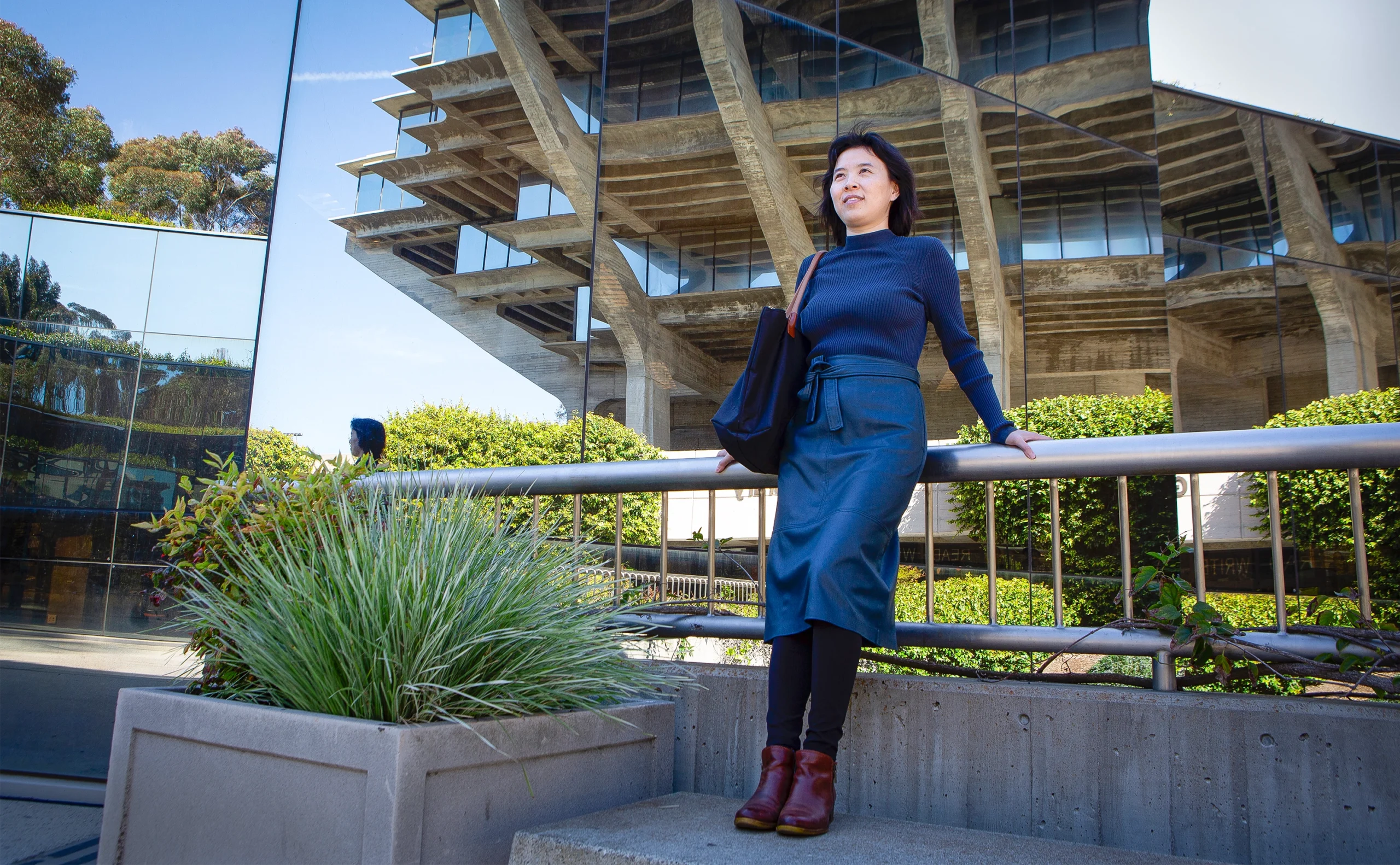
Rose Yu, a computer scientist at the University of California, San Diego, trained machine learning models to find symmetries in data from the Large Hadron Collider.
Peggy Peattie for Quanta Magazine
Rose Yu, a computer scientist at the University of California, San Diego, and colleagues have been training machine learning models to find symmetries in data. A symmetry implies that the data either remains unchanged or changes predictably and simply under a transformation. For example, a circle has rotational symmetry — it is invariant under rotation. Yu and her team applied their technique to data collected at the Large Hadron Collider and identified so-called Lorentz symmetries, which are crucial to Einstein’s theories of relativity. These are changes in perspective that leave the applicable laws of physics unchanged. For example, the rate of production of pairs of particles at the collider should not change at different times of day. If the rate varied, it would imply some dependence on Earth’s rotation and hence a preferential direction in space-time. “We showed that, without knowing any physics, the model can discover the Lorentz symmetry purely from data,” Yu said.
Cranmer and Yu point out that while such methods are good at discovering patterns, making sense of those patterns and coming up with hypotheses or the physics to explain them remains elusive for today’s AI models. But Cranmer thinks that the advent of large language models like ChatGPT could change that. “I think there’s a huge potential for language models to be useful to help automate that construction of hypotheses,” he said. “It’s kind of around the corner.”
Steinberg agrees that while AI has yet to invent new concepts, AI-aided discoveries of new physics could conceivably become reality. “We really might be crossing that threshold, which is exciting,” he said.

